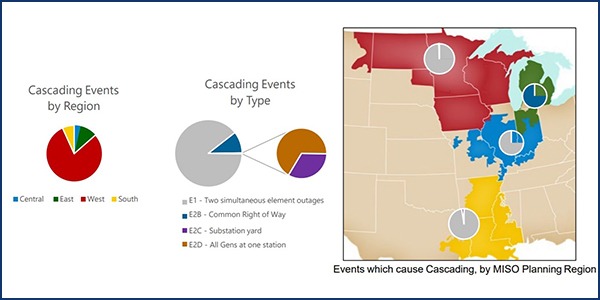The cost estimation guide for MISO’s 2020 transmission planning cycle will for the first time include upfront and long-term cost estimates for HVDC lines.
MISO circulated the draft guide for the 2020 MISO Transmission Expansion Plan (MTEP 20) at the Planning Subcommittee’s meeting Tuesday. The guide is used to evaluate alternatives to some of the proposed projects in the plan.
The RTO is proposing that the new guide increase the costs of lines, substation equipment, breakers and transformers across all voltage classes. Costs of land clearing are similarly set to rise, and costs for the land itself will go up almost across the board.
This year, MISO is also adding cost estimates for HVDC lines and their converter stations, Principal Transmission Design Engineer Devang Joshi said.
All project cost estimates include a 20% contingency cost adder and an additional 7.5% allowance for funds used during construction.
MISO is requesting stakeholder reactions to the cost estimation guide by March 13. It plans to post a final version to its website by June 23.
Extreme Event Results in
MISO’s recently completed an extreme events analysis for MTEP 19 finds the West planning region — Minnesota, Iowa, parts of the Dakotas and western Wisconsin — contains the highest potential for cascading failures on the transmission system.
However, reliability planners said only a few events show cascading failures out of the thousands of extreme events tested.
The annual analysis was performed with two-, five- and 10-year models using contingencies submitted by transmission owners and developed by MISO. Simulated events included single instances and combinations of substation, generation and transmission losses and natural gas pipeline outages.
MISO expansion planner Fatou Thiam said paired element outages on the system present the most common cause of hypothetical cascading in nearly the entire RTO. However, common right-of-way circuit outages are the most prevalent cause in lower Michigan.
After completing the analysis, MISO works with its TOs to pinpoint actions that would minimize the risk or severity of cascading failures. The extreme events study is meant to give TOs a better understanding of the effects of various low-frequency, high-impact events.
MISO is now in the process of compiling extreme event contingencies as part of its MTEP 20 reliability assessment. Additionally, the RTO is asking stakeholders how it might improve its process of developing and evaluating extreme events. Stakeholders are asked to respond in writing by Feb. 28.
— Amanda Durish Cook





